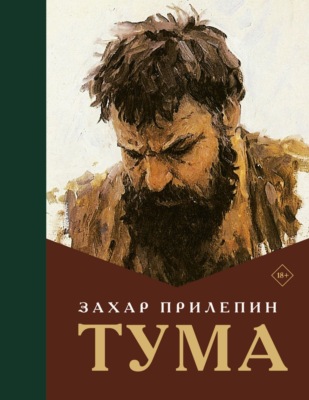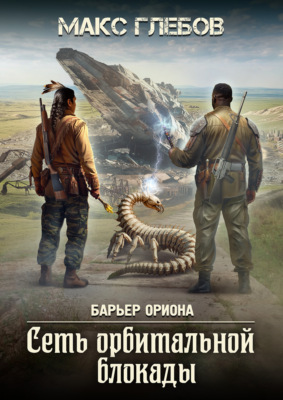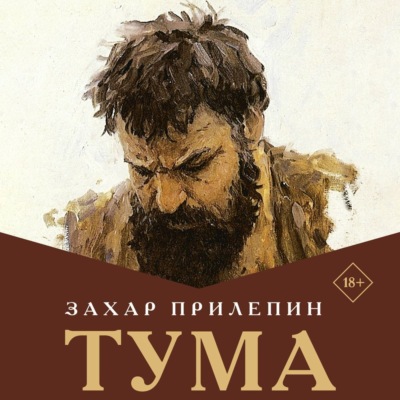Читать книгу: «Life and Adventures of 'Billy' Dixon», страница 12
"My little sisters were sitting on the ground. Two Indian men were there. These two Indians often carried them on their horses, and I thought that was what they would do now; but I wanted to see, so I held my horse back. They saw me lagging behind, so they came up and drove me on, but blamed the horse because he was lame and they thought he stayed of his own accord. After a while I saw those two Indians who were last with Julia and Addie, and also that my little sisters were not with them. I felt that we would all be better off if we were out of our misery, but I did not like to think of their little bodies being left out there for the buffaloes to tramp over and the wolves to eat. As soon as I got a chance I told Sophia that they had killed Julia and Addie, and all she said was, 'they are better off than we are.' But God had a hand in that work, and I believe you will agree with me when I say He wrought a miracle and those little girls were taken care of. I never saw the little ones any more till June, 1875, when I met them at Fort Leavenworth."
After abandoning these two little girls, each of whom was less than ten years old, the Indians began pressing forward more rapidly than ever, to reach the vast solitudes of the Panhandle plains country, where the main body of Cheyennes had gone, and which the raiders reached after a three days' flight. The Cheyennes now divided into small parties, each going in different direction, to confuse the trails, and make pursuit by the soldiers laborious and difficult. Sophia and Catherine became separated, each going with a different band. Sophia was first in discovering that her two little sisters were alive – they had been found by other Indians. Julia said that she and Adelaide cried when they saw the Indians ride away, because they were afraid to be alone in such a strange wild place, and did not know where to find water or anything to eat. They stood in dread of the buffaloes, hundreds of which were near at hand. As the Indians rode away, they motioned to the little girls to follow them. This they tried to do, but finally lost the trail. They were abandoned September 25. Sophia scarcely had time to embrace the little ones before she was carried away by the band that held her captive.
Julia and Addie were with Chief Gray Beard's band of Cheyennes. General Miles was pressing the Indians upon all sides. His command was superior to the combined forces of all the hostiles in the southwest and the latter could have been annihilated in a single engagement had it been possible to attack them in a position where their only alternative would have been to fight their way out. But the Indians were too shrewd to be caught in a trap, and were running and dodging in every direction – their trails crossed and re-crossed and doubled back and turned aside until they were a confused jumble. The Indians knew the country as accurately as a stream follows its own windings. The only fact plain to the scouts was that the hostiles were trying to escape to the Staked Plains. In this uninhabited and practically waterless region a large body of troops would have been badly handicapped in its pursuit of small bands of the enemy, as the latter could move more rapidly and with greater comfort, and in time exhaust the endurance of troops traveling in more or less compact formation.
General Miles embraced every opportunity to employ the tactics of the Indians, and it was the result of this kind of strategy that brought Lieutenant Baldwin and his scouts within striking distance of Gray Bear's band on McClellan Creek. The Indians were so hard-pressed that they were forced to abandon Julia and Adelaide and much camp equipment. I remember vividly the appearance of the deserted camp. We had ridden almost past it when somebody noticed that a pile of buffalo hides seemed to be moving up and down. Pulling the hides aside, we were astonished at finding two little white girls, who proved to be Julia and Adelaide. They were pitiable objects. Hunger and privation had reduced them to mere skeletons, and their little hands and fingers were so thin that they resembled bird's claws. The children were trembling with fright, but upon seeing that we were white men their terror changed to a frenzy of joy, and their sobs and tears made hardened frontiersmen turn away to hide their own emotion. The children said that they had not been mis-treated by the men. The squaws, however, had forced them to work beyond their strength. The little girls were sent to Fort Leavenworth. Their rescue took place November 8, 1874.
Catherine and Sophia Germain were now far out on the Staked Plains. We had fought the Indians – principally Cheyennes, with a few Kiowas – at Tule Canyon on Red River, but without capturing them. General Miles, fearful that the two captives might be wantonly killed by the Indians, when the latter found themselves in increasing danger of attack or capture, employed a Mexican mixed-blood at Fort Sill to go to the hostile camp in the Staked Plains with a secret message to the Germain girls telling them Julia and Adelaide were safe and in the hands of friends, and not to become discouraged. This message fell into the hands of Catherine. It was written on the back of a photograph of Julia and Adelaide that had been made by W. P. Bliss, shortly after they were found by Lieutenant Baldwin's command.
The Cheyennes that had fled to the Staked Plains were under the redoubtable Chief Stone Calf. General Miles sent a formal demand for surrender to Stone Calf, with the specific provision that Catherine and Sophia Germain should be brought back alive. Stone Calf and his followers surrendered March 1, 1875, about seventy-five miles west of the Darlington Indian Agency.
"Just before the sun set," wrote Catherine Germain, "we came to the soldiers' camp. They stood at the side of the trail cheering. We stopped, but I could hardly say anything, and when I think of it now a lump rises in my throat. Oh, I was so glad. I thought I had never seen such white people. They looked as white as snow, but of course they were no whiter than the average people, but my being accustomed to the red people was why they seemed so white and pretty. I just lacked a few days of being 18 years old when we were re-captured, and Sophia was past twelve. We were at the Cheyenne Agency (Darlington) three months."
The warriors who surrendered with Stone Calf were stood in a row by General Miles, and the Germain girls asked to point out those who had engaged in the murder of the other members of the Germain family, or who had mistreated the captives. They pointed out seventy-five Indians, all of whom afterwards were sent to Florida as prisoners of war.
General Miles induced the United States government to appropriate the sum of $10,000 for the benefit of the four girls. He was their guardian for two or three years. They were educated at the expense of the military branch of the Government. All the girls married, and some of them are still living.
The Miles Campaign demonstrated that if there should be further Indian outbreaks it would be well to move a garrison within easy striking distance of the route that led to the Staked Plains. Fort Elliott was established as a permanent garrison in the spring of 1875. I was with the party that selected the site. I was attached as scout at Fort Elliott, and remained in service at that place until 1883. I was the last scout to be relieved of duty at that post, and when I went away the buffalo was becoming a rare animal on the Plains and the Indian was down and out.
Cattlemen began going into the Panhandle as the Indians went out. I remember how greatly I was surprised when I arrived at the Goodnight ranch one day in 1877, and found two white ladies – Mrs. Goodnight, who had joined her husband the previous year, and Mrs. Willingham, whose husband was afterwards superintendent of the Turkey Track outfit. Both were refined, educated women. I often think how helpful such women as Mrs. Goodnight and Mrs. Willingham have been to Panhandle communities. It required some grit for men to live there in those days, and for women the trials and burdens must have been disheartening.
The Staked Plains, by reason of the scarcity of water in summer, opposed great danger to troops in moving through that part of the country. I was with Captain Nicholas Nolan, in command of Troop A, Tenth United States Cavalry, in that memorable experience in August, 1877, in which the detachment barely escaped death from thirst. Captain Nolan was in pursuit of the Quohada band of Comanches, who had slipped away from their reservation at Fort Sill, Indian Territory. Far out on the Staked Plains we joined forces with a party of buffalo-hunters who had organized to fight the Indians. Captain Nolan told the buffalo-hunters that if they would help him find the Indians he would agree to do all the fighting, and assured them that he would do the work to their satisfaction.
Reports were brought in that the Indians were only a short distance away, and that it might be possible to overtake them by moving quickly. In the excitement, many of the soldiers as well as the buffalo-hunters forgot to fill their canteens with water. The Indians eluded us, the men were soon out of water, and a difference of opinion arose as to where the nearest water could be found. Some were in favor of trying for the Double Lakes and some for the Laguna Plata. I had been over this country from the north, not from the direction we were traveling. The men and horses were in a deplorable condition.
Captain Nolan told Lieutenant Cooper to take the course with his compass, which was set east by south ten degrees. The buffalo-hunters feared the distance was too great, and started in another direction, for Laguna Plata. Captain Nolan thought the Double Lakes were further west than I did. We argued over the route until about 3 o'clock in the morning, when he told me to go the way I thought was right. I at once turned more to the northeast. About 5 o'clock I waived my hat to attract the attention of the command, and an orderly came forward. I sent word to Captain Nolan that I thought I saw the Double Lakes. Happily, I was not mistaken. We had to dig for water, and 11 o'clock had passed before the horses were able to quench their thirst.
The sufferings of both men and horses were terrible, and all the way to the Double Lakes our trail was strewn with cast-off clothing and equipment. The buffalo-hunters were in no less desperate straits, many of them, like the soldiers, dropping down to die along the way. Horses were killed that their blood might be drank to assuage the fever of burning throats and tongues. The buffalo-hunters finally reached water at the Casa Amarilla. Both outfits carried water back to fallen comrades and revived them.
CHAPTER XIII
Returning to civilian life in 1883, I struck north from Fort Elliott and went over on the Canadian River, in what is now Hutchinson county, Texas, and hired to a big cow outfit that became widely known as the Turkey Track Ranch, owned by a Scotch syndicate, and then managed by C. B. Willingham. That same year I filed on two sections of land on Bent Creek, taking in the site of the original Adobe Walls ruins. I built my house right at the west edge of the old sod building which by that time stock had rubbed to the ground. In the front yard, however, when the south wind swept the dirt clear, could still be seen the foundations of the old ruins. Whoever built those walls certainly built them well.
When I homesteaded my two sections of school land and built my house at Adobe Walls, I expected to live there the balance of my days, contented and happy. Everything was to my liking – pure air, good water, fruitful soil, game, and room enough for a man to turn round without stepping on some fellows toes. It was the land of my boyhood dreams, and I was satisfied.
I improved my ranch in many ways. I diverted the course of Bent Creek until its clear, swift waters flowed almost at my doorstep, and was able to undertake extensive irrigation. I planted an orchard of 200 carefully selected trees, consisting of apples, peaches, pears, plums, apricots and cherries, together with a small vineyard. I am confident that this was the first orchard ever planted in Hutchinson county, perhaps in the northern Panhandle. It was well irrigated, and the orchard thrived astonishingly. There was not a better orchard in the southwest, and some of the trees are still standing. In my yard I set out a number of cottonwoods which grew rapidly and became big, strong trees, affording generous shade in hot summer. I am sure that my thirty acres of alfalfa was the first ever seen in that section. For many years it produced an unfailing and profitable crop.
In those days our nearest postoffice was Zulu, on Palo Duro, twenty-five or thirty miles distant. One day L. B. Miller, then district attorney, now practicing law at Allenreed, Texas, was at the Turkey Track Ranch. He heard about the way we had to go for mail, and said that he would have a postoffice established at the ranch and make me postmaster. I received my commission and was postmaster at Adobe Walls for nearly twenty years, first at the ranch and later at my home. When I moved down to my own place I opened a little store, carrying in stock such simple things as would supply cowboy trade. It may cause a smile when I say that my two most important articles of merchandise were candy and chewing gum. No schoolgirl could be as foolish as a cowboy about candy and chewing gum. The boys seemed to crave such things, and bought more candy and chewing gum than they did tobacco.
The little log house, to be seen in an accompanying illustration, stands on the ruins of the first Adobe Walls. I built the house in 1883, shortly after I filed on my claim. It is fourteen feet square, and stands a mile south of where the fight took place.
The illustration showing the bluff on the east side of Adobe Walls Creek is a excellent view of the landscape. In coming to attack Adobe Walls in the early morning, the Indians rode up the valley from the right, and were first discovered near the grove of trees.
Mine was a happy life in my cabin at Adobe Walls, without fret or worry, and with abundance of everything for my simple needs. During a greater part of the year wild ducks and geese frequented the Canadian and its tributaries, literally by thousands, and deer and turkey were commonly found along the creeks.
The meat of the buffalo, in my opinion, had a much better taste than beef, and was more easily digested. I was always a big meat eater, and often long for a good fat buffalo steak broiled over a camp-fire in the way "Frenchie," my old cook, used to broil it. When we were camped on a creek where wild turkeys were plentiful, we would kill fifteen or twenty and stew a potful of gizzards, hearts and livers. This was best of all, a dish fit for a king, and a man who never ate it can have no idea how good it was.
I lived here as a bachelor until I married in 1894, after which I continued at Adobe Walls until about 1902, when I sold my ranch and moved to Plemons, Texas. There I lived two years, and found living in town worse than it could have been in jail. I decided to go still further west, and in 1906 homesteaded a claim in what was then known as Beaver County, Oklahoma, once called "No Man's Land." My place was in sight of Buffalo Springs, and on the north line of the Panhandle.
A change in local conditions began in 1887. In that year a good many "nesters," small farmers began coming in and taking up the land. They were bitterly opposed by the big cow outfits, none of which wanted to see the country fenced, and felt that the settlers were intruding into a country where they did not belong and where they certainly were not wanted. I rather think that the cow outfits felt that they had won the country from the Indians and were entitled to it by right of conquest and occupancy. But the "nesters" forced the cow outfits to leave, just as the buffalo-hunters and the soldiers had made the Indians depart. Today the despised "nester" is the bone and sinew of the Panhandle country, and whatever social and material advancement the country had made should be credited mostly to those who built homes and school houses and churches, and tamed the wild land to the crops of civilization. I do not wish to say anything against the cow-men. They were big-hearted, generous fellows, who followed their own way as they saw it. Between the two classes there was much conflict; time, however, solves its problems, and solved them in the Panhandle.
Among the small stockmen who moved their families to the Panhandle in 1887 were the Lards, Ledricks and Walstads, all coming down from Kansas. The Lard and Ledrick families located on Chicken Creek. The Walstad family lived first on Wolf Creek, moving later to the "flats" in Ochiltree County. The Walstads were sturdy Norwegians and not afraid to work. To improve their place on the "flats", they cut cedar pickets in Government Canyon, ten miles away, and "snaked" them up the steep bluffs with a horse – the place was too rough for a team to descend. Nevertheless, they constructed a good-sized, comfortable dwelling out of these pickets, and covered it with dirt. Water was scarce on the "flats," the Walstads hauling it ten or fifteen miles the first year. Mr. Walstad undertook to dig a well by hand, something that no man before nor since has ever tried in that country. He was not financially able to bore a well, and did not know that it was anywhere from 300 to 400 feet to water. He got down about 200 feet and threw up the sponge – the sponge was dry.
The girls in the Walstad family were all splendid riders, as good as could be found in the Panhandle, and could rope a cow or a horse as easily as a man. They rode long distances after stock in all kinds of weather.
The Lards and Ledricks prospered on Chicken Creek. Henry Ledrick had been a post-trader in Kansas, and had lost all his property as the result of Indian raids. The Government afterwards compensated him for his losses. By intermarriage these families have established themselves in many of the Panhandle counties.
For years I was justice of the peace in Hutchinson County. The hardest job I ever tackled was to perform a marriage ceremony, though I married many couples. Ministers were as scarce as buffaloes, and when a couple decided to get "spliced" they went to the nearest justice of the peace or county judge. My usual embarrassment in marrying a couple was once increased beyond measure. I had grown to be very fond of a young lady who lived with Mrs. Willingham on the Turkey Track, but had never been able to muster courage to tell her how much I thought of her and to ask her to marry me. Well, a pesky cowboy did what I had not been able to do, and the two came to have me tie the conjugal knot. I thought that it was hard enough to lose the girl, but to be asked to marry her to another fellow was certainly tough.
Some of the large outfits controlled entire counties for range purposes – and the Panhandle counties were big counties. The Hansford Land & Cattle Company (the "Turkey Track" outfit) run 50,000 head of cattle at one time, and ranged over thousands of acres of land.
The Turkey Track outfit tried to escape the inevitable by buying out "nester" who came into the country in the late 80's, and in this way held all the land, save mine at Abode Walls. The Texas legislature opened up the land to purchase and settlement, and in the 90's the settlers began coming and could not be stopped. They settled first along the creeks and then spread to the uplands. I was State land commissioner for Hutchinson County and did a thriving business.
The people petitioned the Legislature that Hutchinson County be detached from Roberts County, and given a separate organization. Their petition was granted. An election was called for the election of County officers. Much ill feeling had grown up between the settlers and the cow outfits, especially the Turkey Track people who had opposed the making of a new county. The election was bitterly contested, the Turkey Track outfit taking an active part, to control the results. I was elected sheriff, not because I sought the office, but because I had lived in the country so long that I was widely known. I was ignorant of politics and the ways of politicians. I became disgusted and resigned my office, rather than be forced into strife that was not to my liking, and went back to the quietude of Abode Walls. The County Judge also resigned. When a man gets mixed up in politics he is soon traveling a rocky road.
However, I do not hold enmity against anybody. Many changes have taken place in Hutchinson County since that time, and today it is settled with law-abiding, prosperous stock-men and farmers. The Turkey Track sold out to a Kansas company, who also bought my place at Abode Walls.
I married Miss Olive King in 1894. She had come from Virginia to visit her brothers, Albert and Archie King, and the winter before we were married she had taught school on the south side of the Canadian, between Reynolds and Tallahone Creeks. This school house was built of round cottonwood logs, covered with dirt, and was about ten feet square.
I had always been rather bashful in the presence of women, rarely having had opportunity to meet them in a social way. Merely the sight of a good-looking woman coming in my direction made me feel like leaving the trail. How I ever managed to ask my wife to marry me has always been a mystery, made even more remarkable by the fact that she consented. I have always insisted that she did the proposing, but could say no more when she reminded me of the time we were riding together and watered our horses at Garden Springs one September afternoon, and of the promise I made her at that time.
We were married October 18, 1894, on Reynolds Creek at the home of a Portuguese family named Lewis, where my wife had boarded during the winter. The Lewis's were running about 200 head of cattle and had a comfortable home. Mrs. Lewis was a cultivated woman. She spoke English brokenly, and to make herself more familiar with the language had induced my wife to live with her. Mrs. Lewis had been a good friend of mine for several years, and I suspect that it was largely through her influence that I got the girl I so greatly admired.
We have been living together nearly nineteen years. She has borne me a family of which I feel that I am justly proud, and has stood by me in all my ups and downs. It is largely through her efforts that these reminiscences are published. I never took the interest that I should in setting down these matters, and realize that the work should have been done years ago, in obedience to the requests of life-long friends.
We were married by a Methodist minister, the Rev. C. V. Bailey, who drove seventy-five miles from Mobeetie to perform the ceremony. After our marriage, my wife for a period of three years, was the only woman who actually lived in Hutchinson County. She may have grown a bit lonesome, but if she did she never said anything about it. I had the advantage of being able to say, without making any other man angry, that I had the best looking woman in the County. It was not every woman who had lived in a thickly settled community all her life that would have been willing to settle down at Abode Walls.
When Patten, Price & Hyde, the Kansas cattlemen, bought the Turkey Track range and stock, I sold my place at Abode Walls to them. My older children by this time were in need of schooling. The settlers were so few that there was no neighborhood school, so we moved to Plemons and lived there for two years before locating in Cimarron County, then Beaver County, which is settled by the best type of rugged American citizenship. They are temperate, law-abiding, industrious people. Most of them were poor at the beginning, and many have had a hard time getting started. All have the true western spirit. If a settler is in trouble, caused by sickness, death or other unavoidable misfortune, his neighbors are always ready to help him, even putting in his crops for him.
I am often questioned about my experiences on the frontier, as if the life had been filled with unbearable hardships, to be shunned and forgotten. Gladly would I live it all over again, such is my cast of mind and my hunger for the freedom of the big wide places. I would run the risks and endure all the hardships that were naturally ours just for the contentment and freedom to be found in such an outdoor life. I should be unspeakably happy once more to feast on buffalo meat and other wild game cooked on a camp-fire, sour dough biscuit and black coffee, that latter drank from a quart cup.
But those days are gone and forever, and we must content ourselves with the present and make the best of our opportunities. Coming generation will never know the trials and hardships we endured. We helped build a great empire in the west.
Let it be governed justly and made to serve the needs of humanity.
THE END
Покупайте книги и получайте бонусы в Литрес, Читай-городе и Буквоеде.
Участвовать в бонусной программе











